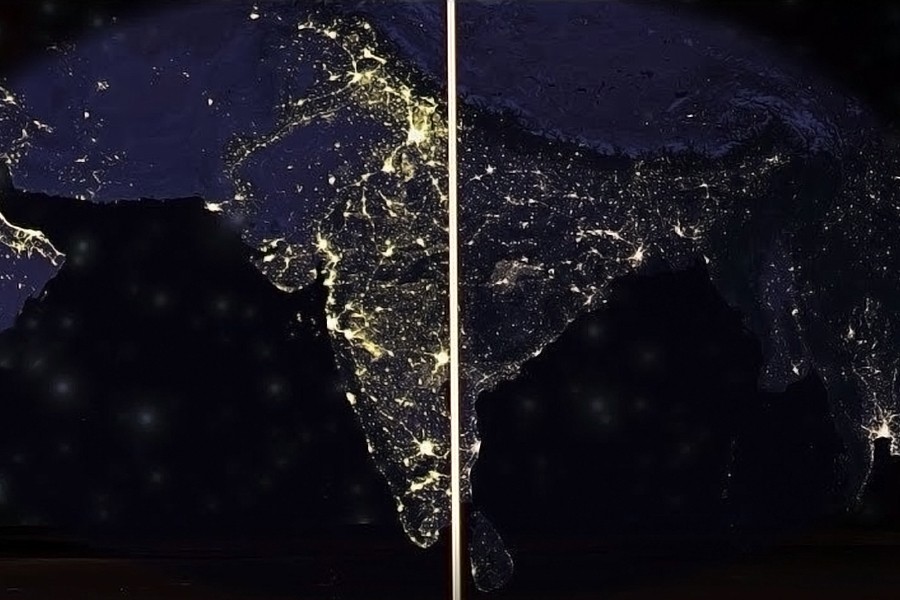Economic growth measures the performance of an economy. But to what extent do the available data on commercial activities genuinely represent a nation's performance?
Gross Domestic Product (GDP) is the primary standard of measure of a nation's economic performance. But in developing countries such as Bangladesh, where the informal sector is large, using GDP to measure our economic activities is challenging.
New technological disruptions have made it possible to get more accurate measurements of a nation’s performance.
According to a research conducted by The World Bank, there is a high correlation between the GDP level in South Asian countries and the nightlight intensity.
Light observed from satellites is thought to be a good reflection of the economic activities taking place in a region, it says.
In the research, highest night light intensity was observed in Maldives, followed by India, Pakistan, Bangladesh and Sri Lanka.
In Nepal, Afghanistan, and Bhutan, night light intensity was lowest among the South Asian nations.
Using luminosity as an indicator has challenges such as clouds, moonlight and sun radiance which can affect the measurement accuracy.
But benefits of using nightlight data are that it is available in high frequency and high spatial resolutions. Nightlight intensity led to the development of new and exciting insights.
In Nepal, the major shocks experienced in 2015 had different impacts in different districts.
The demonization in India was thought to have the short-lived effects, but a noticeable effect on rural and informal communities was observed.
Although using nightlife provides us with new economic insights, it cannot be used as a replacement for the traditional statistical indicators.
Thus to maximise the benefits of these innovative indicators, we should try to incorporate them into a model along with conventional to ensure a holistic assessment of the economic progress and development of a nation can be obtained.


